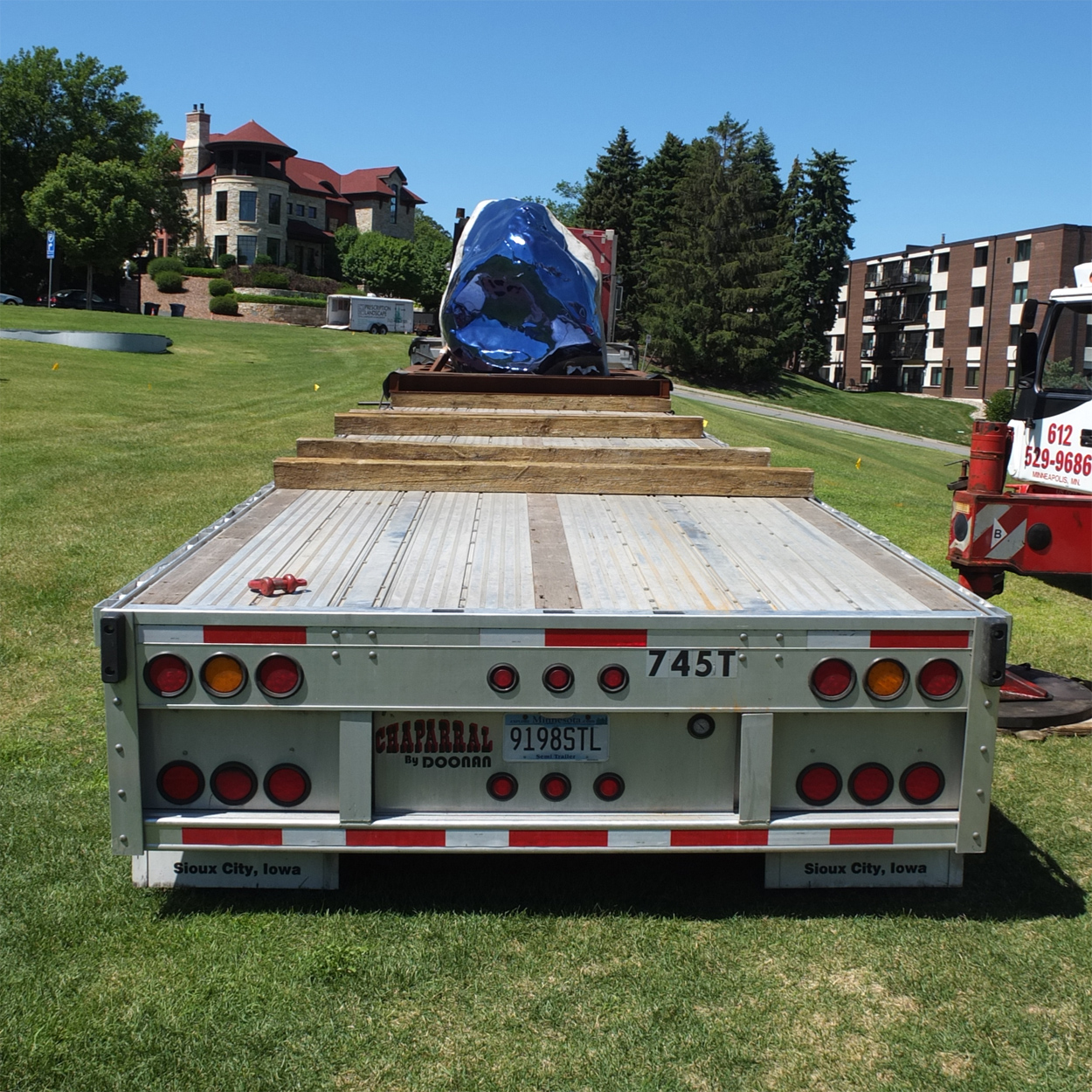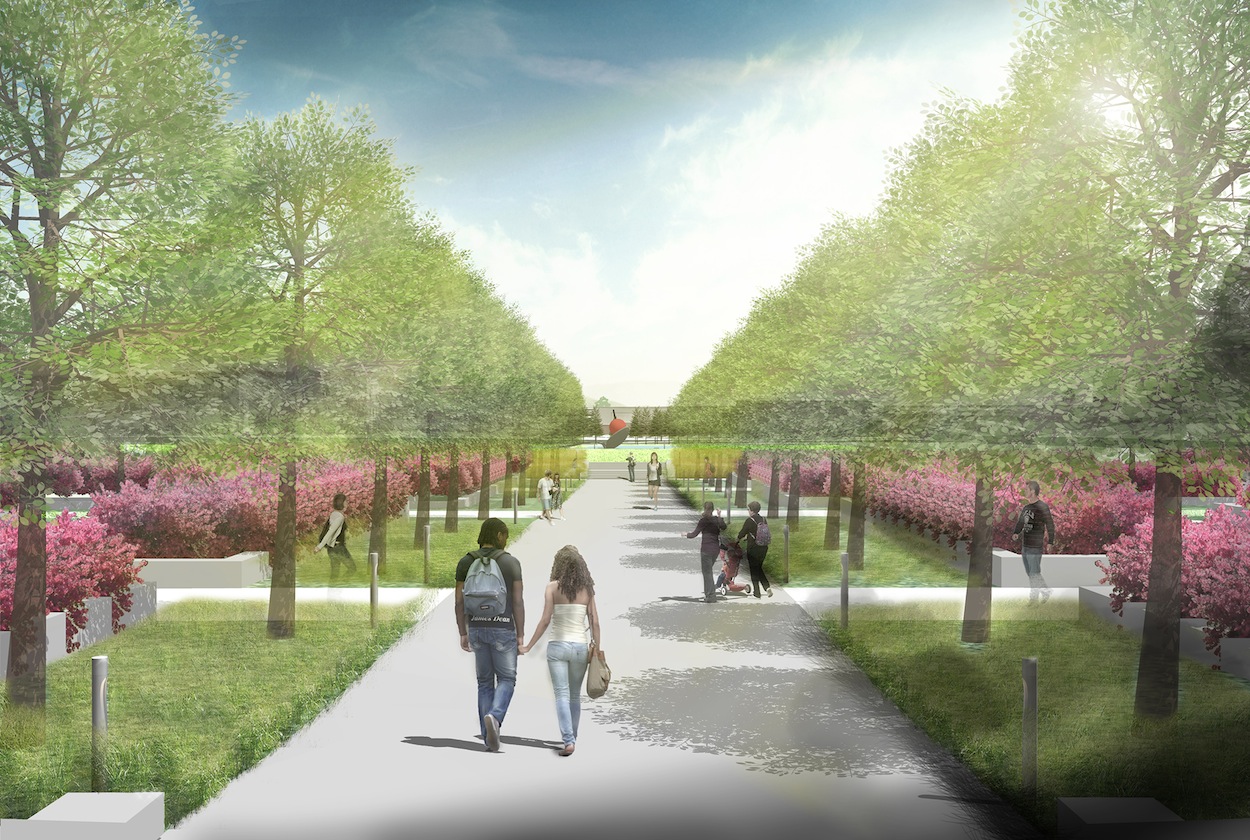Change—of the most exciting kind—is afoot on the Walker campus. As I write this, construction fence is going up and the first sculptures are being safely secured for storage as we begin the ambitious renovation of the Walker grounds and the Minneapolis Sculpture Garden.
In 1988, the Minneapolis Park & Recreation Board partnered with the Walker Art Center to develop the Minneapolis Sculpture Garden, the first major urban sculpture park in the country. Today the Garden is one of the crown jewels of the park system, uniting two of Minnesota’s most cherished resources—its green space and its cultural life. The 11-acre site showcases more than 40 works from the Walker’s internationally renowned collections. But after 26 years and more than 9 million visitors, the Garden’s infrastructure needs to be reconstructed in a sustainable manner to serve visitors now and for generations to come.
Thanks to the citizens of Minnesota, the State Legislature, and Governor Mark Dayton, the Minneapolis Park & Recreation Board received $8.5 million in public bonding support to fund the much-needed reconstruction of this major cultural asset. In addition, the Mississippi Watershed Management Organization has dedicated up to $1.5 million for innovative storm-water management systems in the project. This comprehensive work will require Garden closure from spring 2016 until summer 2017.

You’ll start to see changes in the coming weeks as this project progresses. Last week, the first of many sculptures to be placed in storage during construction—Jim Hodges’ steel-clad boulders on the Walker hillside—were removed, and nearly all artworks from the Garden will join them in the coming weeks. But several works will relocate and remain accessible to the public. The iconic Spoonbridge and Cherry (1985–1988) by Claes Oldenburg and Coosje van Bruggen will remain on-site, as will Richard Serra’s Five Plates, Two Poles (1971) and Sol LeWitt’s X with Columns (1996). (The Garden will remain open to the public through spring 2016.)
Brower Hatcher’s Prophecy of the Ancients (1988), Mark di Suvero’s Molecule (1977–1983), and Tony Cragg’s Ordovician Pore (1989) will be on view in Gold Medal Park adjacent to the Guthrie Theater. Jacques Lipchitz’s Prometheus Strangling the Vulture II (1944/1953) will be on view at the Minneapolis Institute of Arts, and Frank Gehry’s Standing Glass Fish (1986) will find a home in the Gehry-designed Weisman Art Museum on the University of Minnesota campus in early winter of 2015.
The Garden’s renovations will mirror big changes on the Walker campus as well, and the two projects will create a unified feel for these two cultural campuses, which will now share a combined 19 acres of green space. Renovations to the Walker building and campus, slated to be completed by November 2016, will include a new entry pavilion for the Walker, a new Walker green space on the hillside, and the greening of Hennepin Avenue. The Walker will remain open during construction. When the Garden reopens in summer 2017, the vision for the 19-acre Walker Art Center and Minneapolis Sculpture Garden campus will be realized.
We’ll share progress on these two historic projects through regular updates right here on the Centerpoints blog.

Learn more about progress on the Walker/Minneapolis Sculpture Garden renovation project.
Get Walker Reader in your inbox. Sign up to receive first word about our original videos, commissioned essays, curatorial perspectives, and artist interviews.
